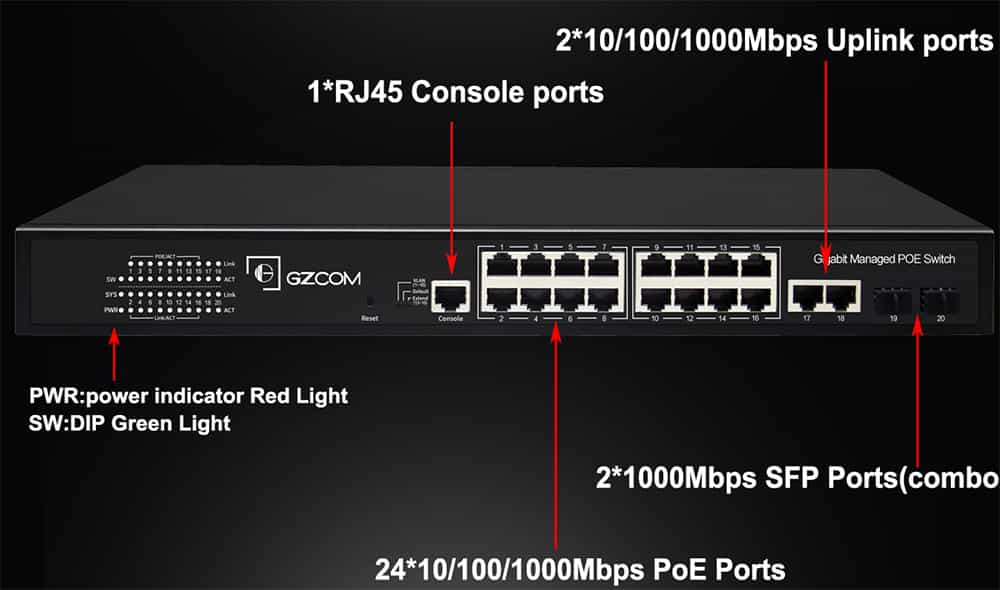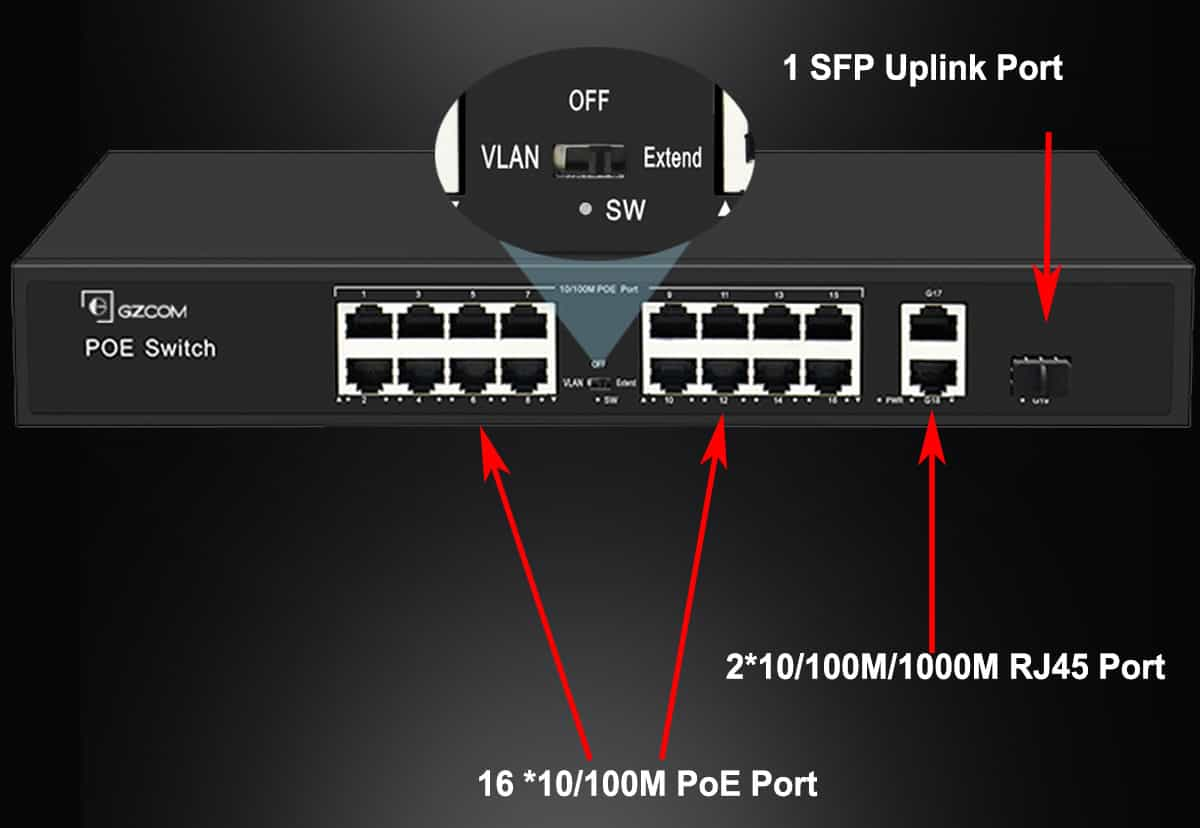Please submit your message online and we will contact you as soon as possible!
- Experience security and speed, without compromise.

2024-04-15
Gigabit switch devices are integral to modern networking,, which offering high-speed connections through different types of ports. Among these, the Small Form-factor Pluggable (SFP) interface is particularly noteworthy for its adaptability and efficiency. The scope of this paper revolves around SFP interfaces on Gigabite switches by making difference with RJ45 port and exploring the diverse type of SFP ports.
An SFP interface on a Gigabit switch is a compact, hot-swappable input designed for the attachment of SFP transceivers, which facilitate either optical fiber or copper cabling for network communication. These interfaces are prized for their ability to deliver fast data transfer rates and maintain a compact form factor, making them ideal for dense network environments.
Compatible SFP slots within Gigabit switches can house different SFP transceiver types that facilitate either electrical or optical connections. This level of flexibility means that depending on the component module, the same SFP port can support either fiber optic or copper Ethernet cables, whichever is required for optimal data transmission.
Gigabit switches typically feature several types of SFP ports, each serving distinct networking purposes:

Combo SFP ports represent a hybrid networking solution that combines the capabilities of two distinct interfaces into one versatile port. These ports have the capability to handle connections through copper-based Ethernet over an RJ45 interface and through optical fiber over SFP interface. What the SFP port offers is the choice of connection; either using a copper cable or a fast fiber link, according to the needs of the network.
However, that the two interfaces in a combo SFP port are not to be used simultaneously. A network administrator has to select a particular interface type among the available two options—RJ45 for copper cabling or the SFP for fiber optic cabling. This design ensures that only one type of connection can be active at a time, preventing any conflicts or compatibility issues that might arise from dual usage.

SFP uplink ports play a pivotal role in the structured design of network topologies by enabling the connection of network devices across different hierarchical layers. These ports are able to connect switches to one another or to higher-level switches with a standard straight-through cable.
A three-tier classic network architecture that is comprised of an access layer as a bottom layer and followed by the distribution layer and, lastly, the core layer as the top layer.SFP uplink ports are instrumental in establishing a cohesive and efficient network flow. SFP downlinks are usually used for direct links to end-user devices such as laptops and personal computers, the purpose of the uplinks is different.
The basic operation of the SFP uplink port is performing the job of linking the device that it is placed on with a device that performs its operation at the higher level of the network hierarchy. Such inter-layer connectivity is significant for the smooth delivery of data across the network as well as the network's performance is maximised if well-execute.
To describe, PoE stands for the Power over Ethernet that consists of power conveying as well as data transmission for any connected devices. SFP PoE port enables the content of data and power flow through a single Ethernet cable and hence this technique is useful for the working of IP cameras, VoIP phones,wireless access point and other devices which needs both data and power connections.
Also check - What is PoE Switch
While both SFP and RJ45 ports are present on Gigabit switches, they differ in several key aspects:
RJ45 ports only works with copper cables and was designed to transport data rates up to 1Gbit/s within 100 meters (approx. 320 ft). SFP ports have been designed to collaborate with many cable types such as fiber optic or advanced copper cables, hence they offer more communication options and extended reach capabilities.
RJ45 ports are good for the length of 100 meters or so, which could be ideal for a local network connection. SFP ports can support much longer distances.With multimode fiber (MMF) cables reaching up to 550-600 meters and single-mode fiber (SMF) cables extending to 150 kilometers.
As a result, interfaces on SFP ports on Gigabit switches they provide a powerful and reliable tool for connecting to many types of network cables that actually increase the functionality of network switch. The combo, uplink and PoE SFP ports slot availability make the network configuration tailor-able.
Please submit your message online and we will contact you as soon as possible!